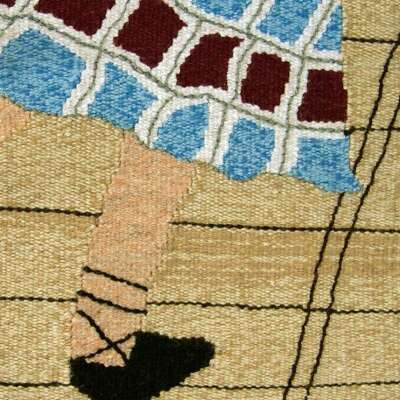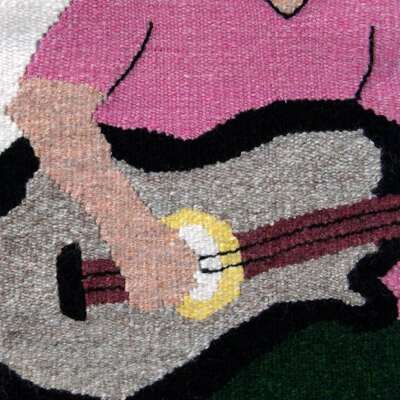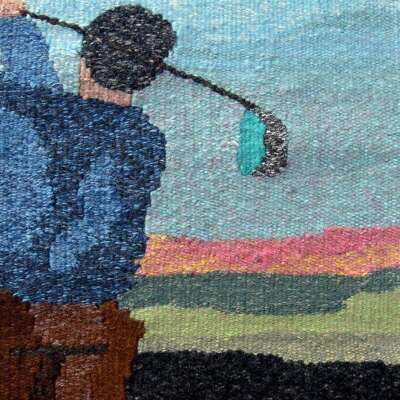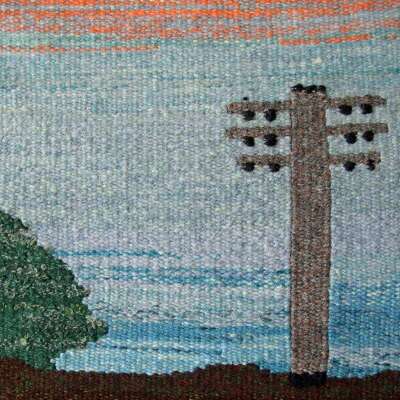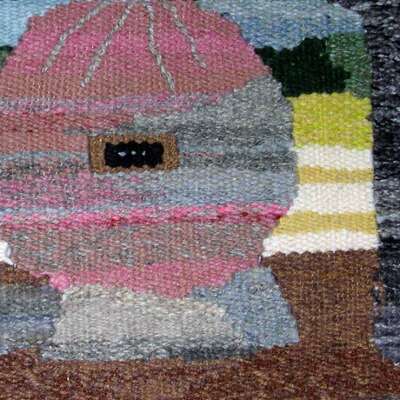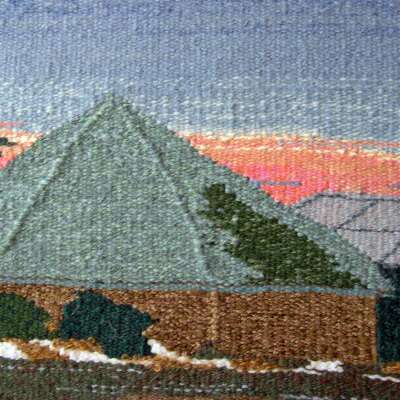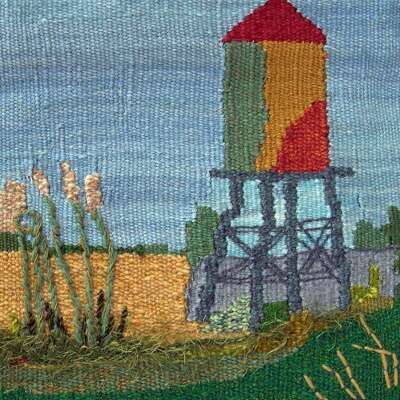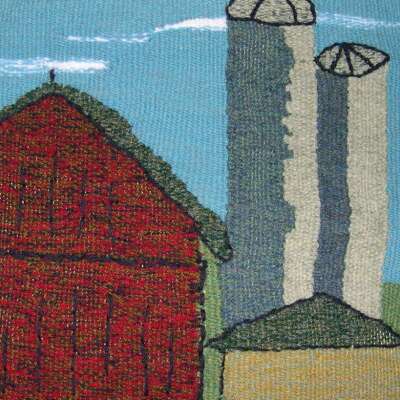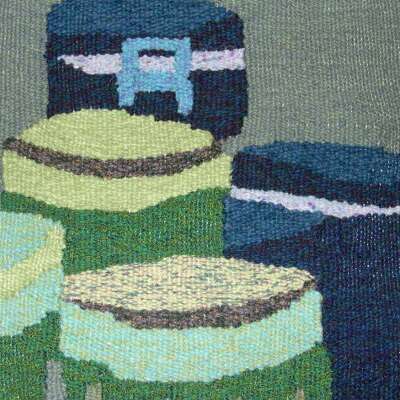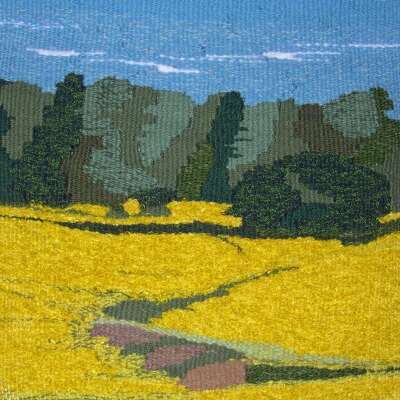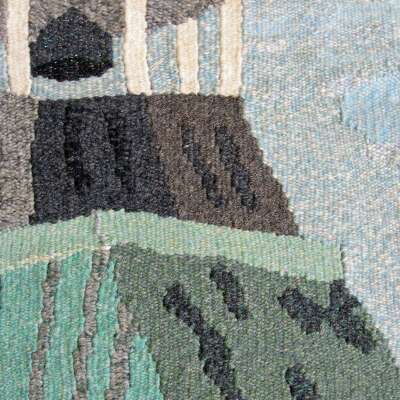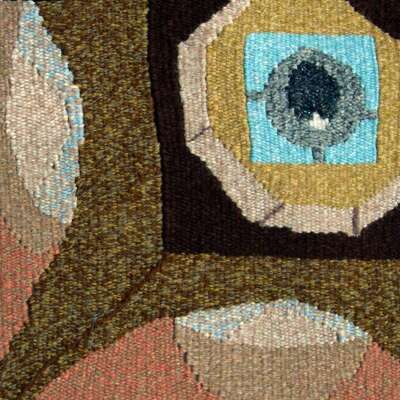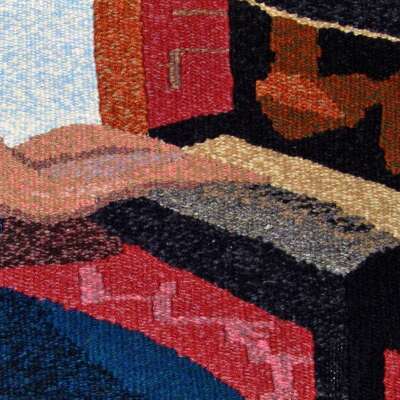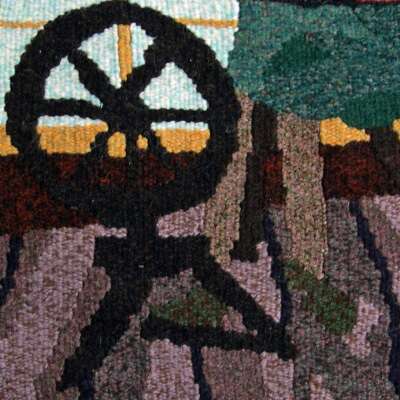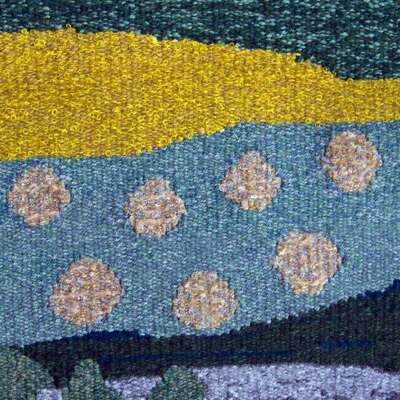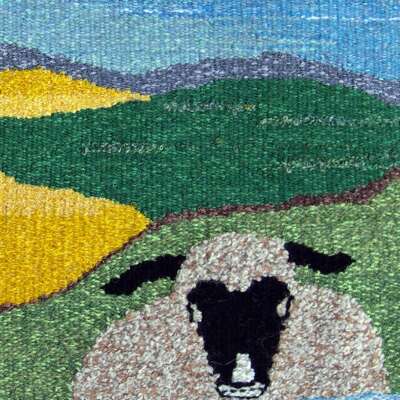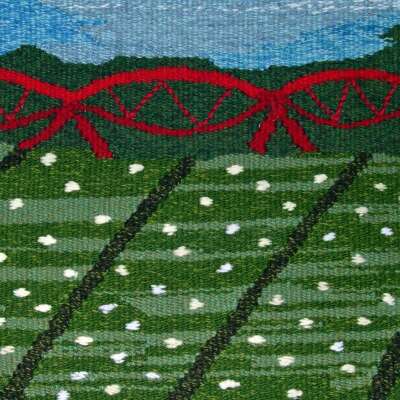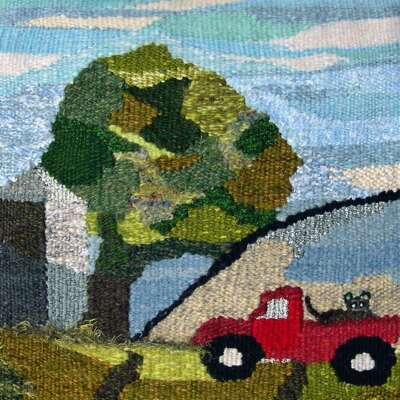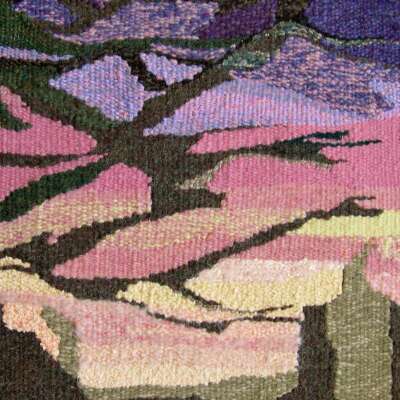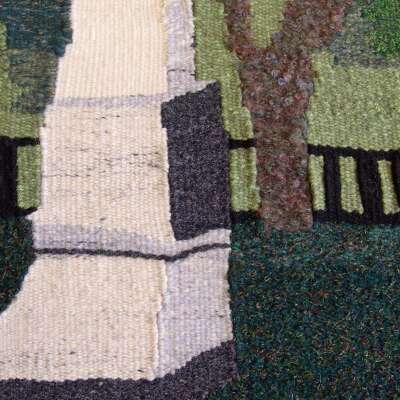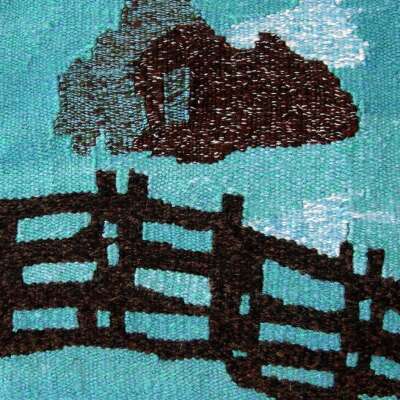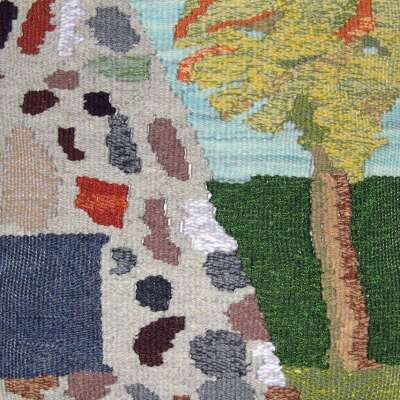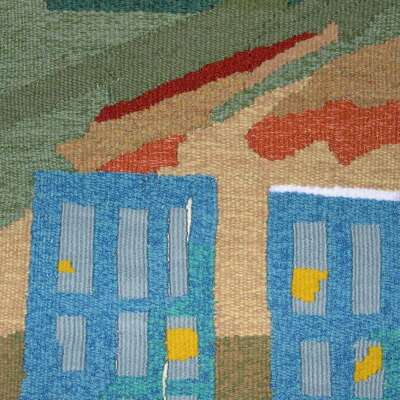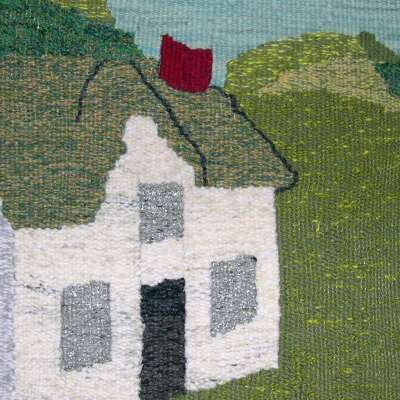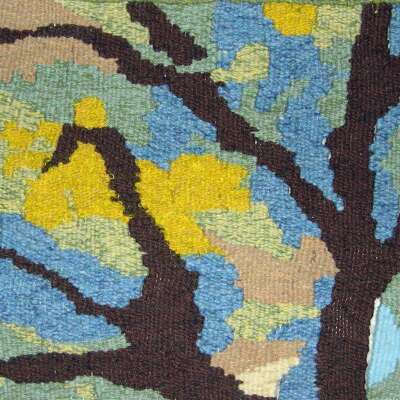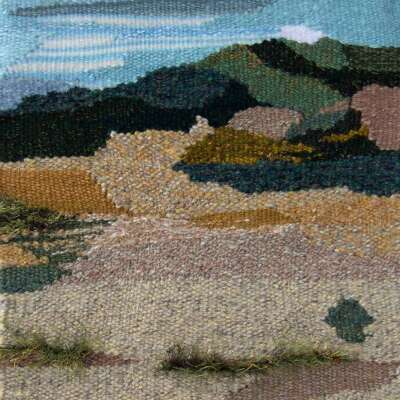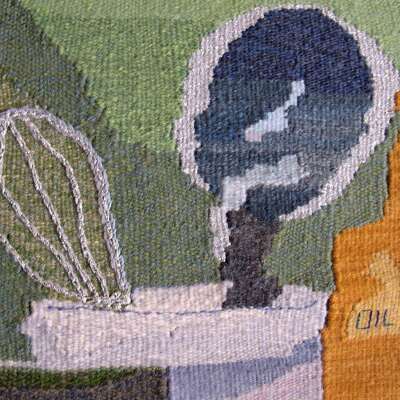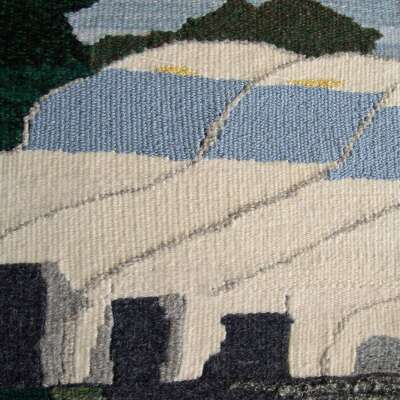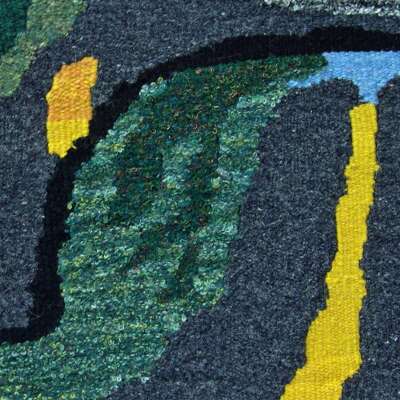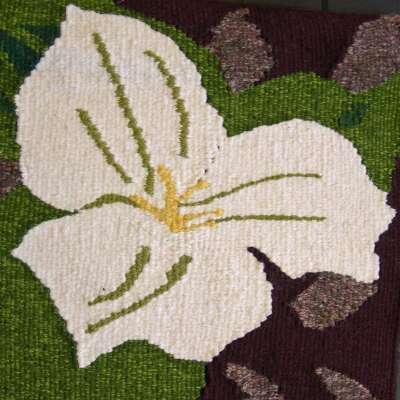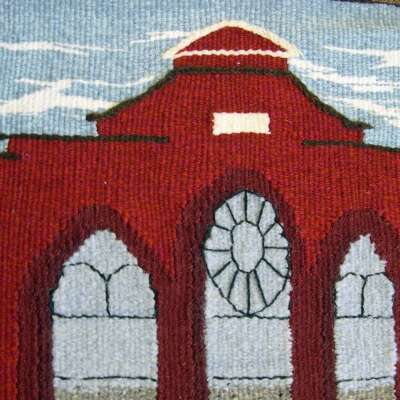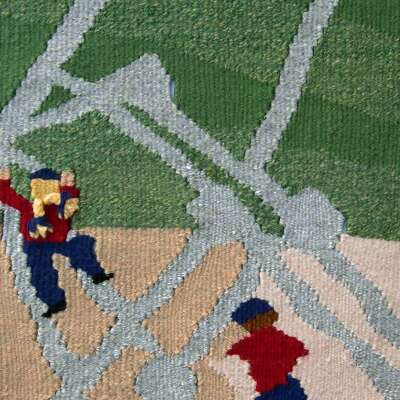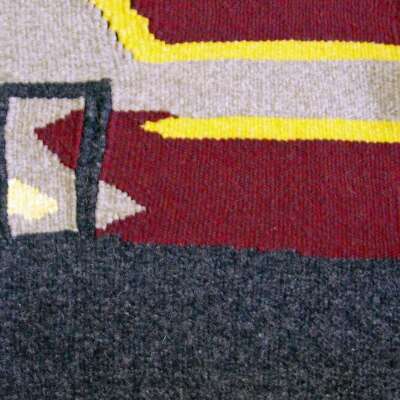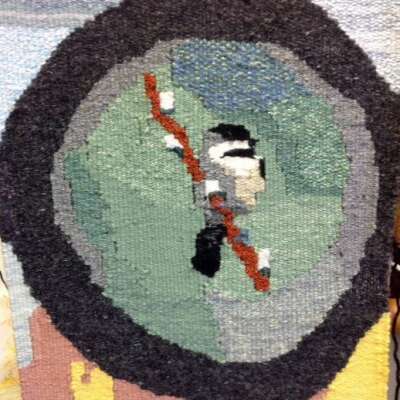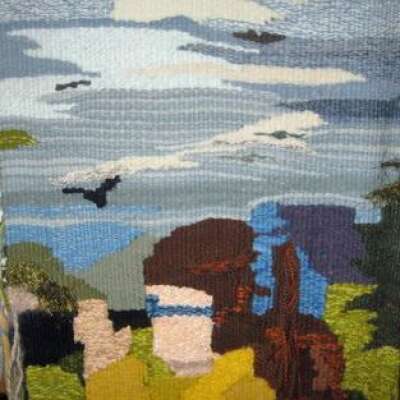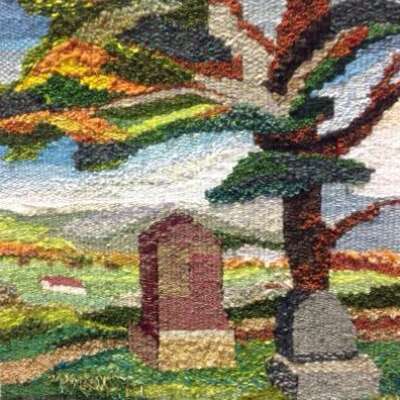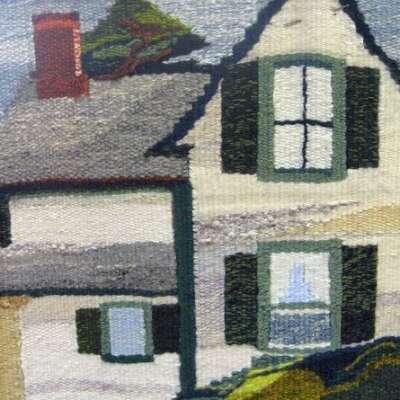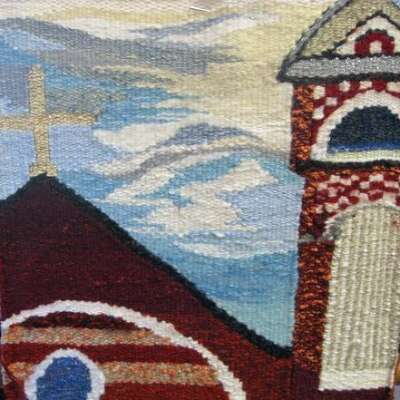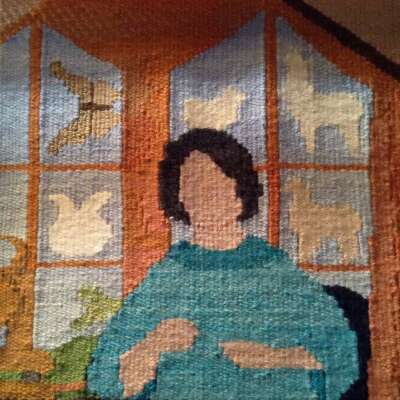A Community Threads Project
The Nottawasaga Tapestries were created over a period of two years. They were designed and woven by the Nottawasaga Handweavers and Spinners Guild and members of the community. We were fortunate to have Line Dufour, a renowned tapestry artist, as our mentor to guide us on this journey. The generous contribution from the Ontario Arts Council, donations and the many volunteer hours made this project possible.
The project began with photographing scenes, activities and buildings in the area. Guild members and friends gathered to sort through the images to select those to be used for the tapestries. The photo images were used to create representaive paintings. Once arranged into strips of 4 images, they were traced onto acetate overlays. Using an overhead projector they were enlarged to make full scale cartoons to follow while weaving the tapestries. Using donated yarns, borrowed tapestry looms the weaving commenced. Some of the tapestries were done at our guild space at the Gibson Centre and some were done off site. Finishing included weaving in all the loose ends, blocking and adding headers. In 2013, The Nottawasaga Tapestries were complete. They have been displayed in several locations over the years including the Gibson Centre, The Simcoe County Museum and The Museum of Dufferin. There are 12 tapestries with 4 images each. 45 of these images are shown in these photos.

